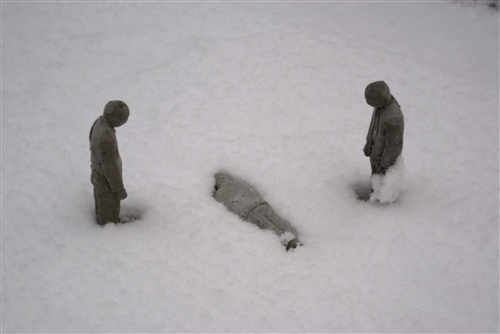Often, tools and materials determine a design. I stumbled across this silicone pad in our local hardware store -- a hot plate for pots in the kitchen. It was pale blue and very flexible, divided into open squares of about 5 mm, each hole about 2 mm deep. Silicone is a great mold-making material for concrete, so I bought it not knowing at the time what I would do with it.
5 mm squares after they are released from the silicone mold
First, I was thinking the texture would look great pressed into the surface of a larger concrete sculpture, but then I thought of beads, lots of beads. I sprayed the surface of the pad with a release agent, then mixed up a fairly fine mix of Portland cement and stone dust (1:1), with 10% metakaolin, a bit of black dye and some PVA fibers. This was spread over the surface of the mold, then packed with a small rod into the square spaces, smoothed off, and covered in plastic sheet for a few days. When I pulled the concrete out of the mold, the fibers held most of the squares together, so I used a utility knife to slice them apart. The squares were then immersed in water for about a week.
After the week was up and the concrete was probably 90% cured, I drilled each bead with a .9 mm (.035") metal drill. I drilled from both sides to try and keep the hole centered. The next step was to wet-sand all the surfaces by hand, using a 400 grit sandpaper. This gave a smooth surface to the beads and also got rid of all the surface fibers. To round off the edges (rather than hand sanding such tiny shapes) I tumbled them with steel shot for an hour. When they came out of the tumbler, this is what they looked like among the steel shot:
Tiny square concrete beads in steel shot
The plan is to use these concrete beads in some minimal jewellery designs, such as the partly completed earrings below.
Draft earring design, sterling, titanium, concrete








